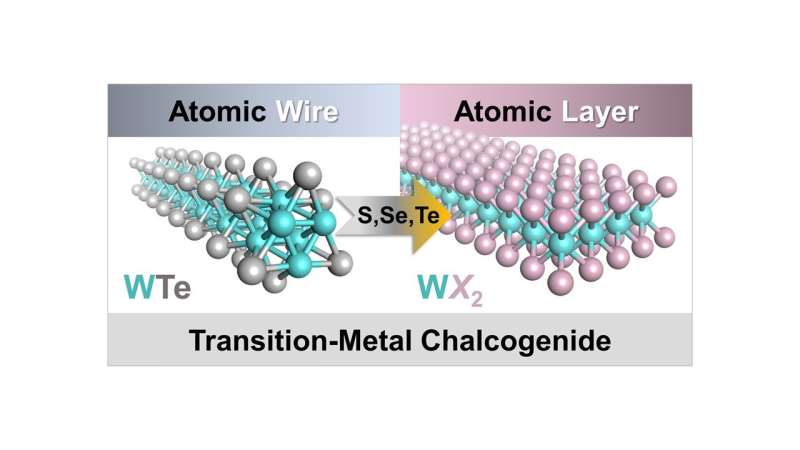Scientists weave atomically thin wires into ribbons

Researchers from Tokyo Metropolitan University have succeeded in using nanowires of a transition-metal chalcogenide to make atomically thin nanoribbons. Bundles of nanowires were exposed to a gas of chalcogen atoms and heat which helped merge the threads into narrow strips. Nanoribbons are highly sought after for sophisticated electronic devices; given the scalability of the method, the team hopes it will see widespread use in the industrial production of cutting-edge materials.
As circuitry gets smaller, faster and more energy-efficient, scientists are faced with the increasingly difficult challenge of controlling the atomic-level structure of the materials that are used in them. One promising avenue of research is the use of intricate threads of material only a few atoms wide; one such structure is composed of transition-metal chalcogenides, a combination of transition metals and chalcogens, atoms which share a column with oxygen on the periodic table. These atomically thin nanowires possess properties unique to their one-dimensional structure and are highly sought after for sophisticated electronic devices. But what they have in minuteness, they lack in tunability. This is where nanoribbons, narrow, atomically thin sheets, come in. Fine control of their width, for example, leads to controlled variation in their electronic and magnetic properties.
A great deal of work has been applied to build nanoribbons from the bottom up. The problem, however, is that such methods aren't scalable. That's a problem for producing bulk quantities for commercial devices. Now, a team led by Dr. Hong En Lim and Associate Professor Yasumitsu Miyata from Tokyo Metropolitan University have come up with a scalable way of assembling nanowires into nanoribbons.
The team had already pioneered ways to produce nanowires in bulk quantities. Using tungsten telluride nanowires, they created bundles of wires deposited on a flat substrate. These were exposed to vapors of chalcogens like sulfur, selenium and tellurium. With a combination of heat and vapor, the initially separate threads in the bundles were successfully woven together into narrow, atomically thin nanoribbons with a characteristic zigzag structure. By tuning the thickness of the original bundles, they could even choose whether these ribbons were oriented parallel to the substrate or perpendicular to it, thanks to a competition between how favorable it is to have edges or faces parallel to the bottom surface. Furthermore, by tuning the substrate on which the bundles are placed, they could control whether the ribbons were randomly oriented or pointing in a single direction. Importantly, the method is scalable and may be applied to take the synthesis from lab-scale manufacture of a few ribbons to bulk syntheses over large substrate areas.
The team was able to confirm that the ribbons had exotic electronic properties unique to their one-dimensional nature. Not only is this a big leap forward for materials science, but a tangible step toward mass-produced nanoribbons in state-of-the-art electronics, optoelectronics and catalysts.
More information: Hong En Lim et al, Nanowire-to-Nanoribbon Conversion in Transition-Metal Chalcogenides: Implications for One-Dimensional Electronics and Optoelectronics, ACS Applied Nano Materials (2021). DOI: 10.1021/acsanm.1c03160
Provided by Tokyo Metropolitan University





















